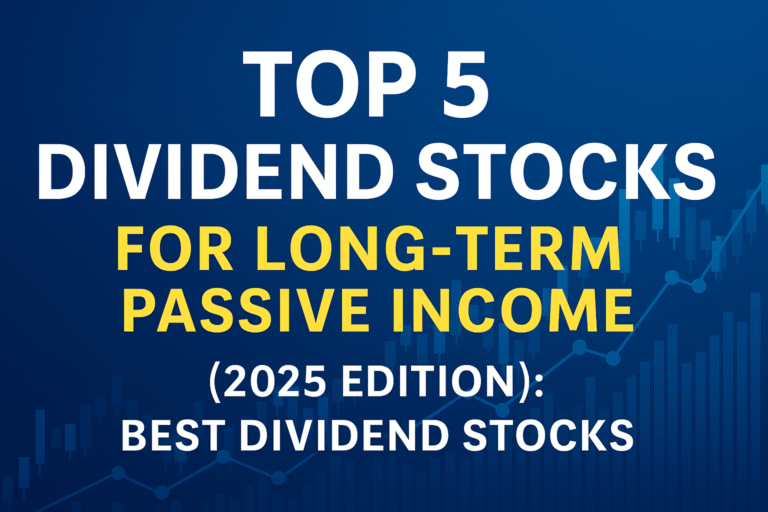Step by Step Options Trading Guide for Beginners: Build Wealth with Ease

Introduction
Options trading is a powerful tool that can pave the way for financial independence. Whether you’re aiming to bolster your investment portfolio or secure a reliable source of passive income, options trading can help you reach your goals. The best part? This step by step options trading guide for beginners is designed to make this journey accessible, even if time is scarce.
Addressing the Time-Strapped
For many, the complexity of options trading feels insurmountable, especially for busy professionals. This guide focuses on streamlining the process, making it a perfect investing how-to for time-strapped individuals. You’ll learn how to navigate the basics, automate trading processes, and execute successful trades without sacrificing your day-to-day commitments.
Overview of Your Options Journey
Here’s a peek at what you’ll uncover:
- Fundamentals of options trading.
- Steps to set up beginner-friendly trading accounts and automation.
- Detailed trading processes.
- Efficient strategies suitable for those with limited time.
Understanding the Basics of Options Trading
What Are Options?
In simple terms, options are contracts granting buyers the right, but not the obligation, to purchase or sell an asset at a specific price within a predetermined period (Investopedia).
Key Concepts Explained
- Premiums: The cost to purchase the option from the seller.
- Strike Price: The price at which you can buy (call) or sell (put) the underlying asset.
- Expiration Date: The deadline for exercising the option (Schwab).
These terms are fundamental in any step by step options trading guide for beginners.
Call vs. Put Options
- Call Options: Provides the right to buy an asset at a strike price. Ideal when you anticipate the asset’s value rising.
- Put Options: Provides the right to sell the asset. Use these when you suspect the asset’s value will fall.
Example: Suppose you predict stock XYZ will increase in value. Buying a call option allows you to secure it at a lower price for future gain. Conversely, a put option lets you sell at a higher price, anticipating a drop.
Benefits of Options Trading
- Leverage: Amplify your position with modest capital.
- Hedging: Safeguard against market swings.
- Flexibility: Utilize varying strategies across different market dynamics (Fidelity).
Potential Risks
- Loss Potential: Options can expire worthless, losing the premium paid.
- Market Volatility: Unpredictable price movements.
- Complexity: Requires grasping multiple factors and can lead to expensive errors.
Getting Started: Setting Up for Success
Choosing the Right Brokerage
Criteria for Selection
- User-Friendly Interface: Essential for seamless navigation and trade execution.
- Low Fees: Keep costs minimal for optimal profit.
- Educational Resources: Access to tutorials, webinars, and customer support.
- Analytical Tools: Use charts and market data for informed decision-making (TrendSpider).
Recommended Brokerages for Beginners
- Robinhood: Easy-to-use interface, no commission fees. However, it lacks advanced tools.
- Charles Schwab: Extensive tools and educational content, though a more complex interface can be a barrier.
- Webull: Mobile-friendly with advanced charting, albeit with a learning curve (Bankrate).
How to Set Up Automated Stock Trading
What Is Automated Trading?
Automated trading systems execute trades based on pre-set criteria. For those with bustling schedules, this means:
- Time savings.
- Eliminated emotional decisions.
- Consistent trading activity.
Step-by-Step Setup Guide
- Choose a Platform with Automation Features: Platforms like E*TRADE offer automated trading settings.
- Define Your Trading Strategy: Establish clear rules for initiating trades. Example: Initiate a buy when an asset reaches a target price.
- Backtest Your Strategy: Use historical data to gauge potential success.
- Implement and Monitor: Activate your strategy, reviewing performance regularly for adjustments (Fidelity).
Step by Step Options Trading Process
Step 1: Education and Research
Essential Learning Resources
- Investopedia: A goldmine of options concepts (Investopedia).
- Broker Tutorials: Explore educational sections provided by your brokerage.
- Interactive Courses: Platforms like Udemy or Coursera are invaluable.
Understanding Market Indicators
- Volatility (VIX): Gauges market risk; higher volatility raises premiums.
- Trends: Spot upward or downward price trajectories.
- Chart Patterns: Learn formations predicting price changes (E*TRADE).
Step 2: Developing a Trading Plan
Setting Trading Goals
- Define Objectives: Is your aim income generation, capital growth, or risk hedging?
- Time Horizon: Scout out short-term vs. long-term horizons.
- Risk Tolerance: Gauge capital allocation per trade.
Risk Management Techniques
- Position Sizing: Establish a comfortable investment amount.
- Diversification: Don’t place all bets on one asset.
- Stop-Loss Orders: Automated orders to mitigate losses (Schwab).
Step 3: Selecting Your First Options Trade
Choosing Options Contracts
- Liquidity: Opt for options with high trade volume to ease entering and exiting trades.
- Premiums: Consider budget-friendly options.
- Expiration Dates: Align your strategy with short- or long-term expirations.
Analyzing Potential Trades
- Fundamental Analysis: Evaluate a company’s financial records.
- Technical Analysis: Utilize charts and indicators to predict trends (M1 Finance).
Step 4: Executing the Trade
Placing an Order
- Order Types:
- Market Order: Immediate buy/sell at the current price.
- Limit Order: Trade at a specific price.
- Execution Steps:
- Select your option contract.
- Choose your order type.
- Review details before submitting (E*TRADE).
Monitoring the Trade
- Track Performance: Observe price dynamics.
- Adjusting Positions:
- Closing Early: Secure profits or curtail losses pre-expiration.
- Rolling Over: Adopt a later expiration position (Fidelity).
Step 5: Reviewing and Improving
Post-Trade Analysis
- Evaluate Outcomes: Reflect on results vs. expectations.
- Document Lessons Learned: Maintain a journal tracking strategies and emotions.
Strategy Refinement
- Identify Patterns: Note successful strategies and recurring errors.
- Continuous Learning: Stay abreast of market trends and new techniques (The Trading Analyst).
ETF Trading Tutorial for Busy Professionals
Introduction to ETFs
Exchange-Traded Funds (ETFs) are pooled investment products tracking indexes, commodities, or sectors. They offer:
- Diversification.
- Stock-like trading flexibility throughout the day.
- Simplified investing for time-starved individuals.
Efficiency for the Busy Investor
- Lower Maintenance: Spend less time than individual stocks.
- Steady Growth Potential: Apt for long-term strategies (M1 Finance).
Step-by-Step Guide
- Define Investment Goals: Are you aiming for growth or income?
- Research Suitable ETFs: Opt for funds with low expense rates and stellar track records.
- Invest Through Your Broker: Use brokerage updates to acquire ETF shares.
- Automation Strategies:
- Dollar-Cost Averaging: Regular investing.
- Automated Investments: Recurring investment setup.
Investing How-To for Time-Strapped Individuals
Passive Investment Strategies
Passive vs. Active Investing
- Passive Investing: Long-term approach following market indexes.
- Active Investing: Frequent trading aiming for outperformance.
Best Options for Limited Time
- Index Funds: Track market indexes.
- ETFs: Described above (Schwab).
Leveraging Technology
Investment Apps and Tools
- Robinhood: Zero commission, easy design.
- Fidelity: Complete tools, excellent support.
- M1 Finance: Blends robo-advisory with traditional stockbroking (Bankrate).
Automation and Alerts
- Automated Investments: Regular deposits and trading setup.
- Price Alerts: Market movement notifications are crucial for time-strapped individuals.
Time Management Tips
Integrating Investing into Daily Life
- Schedule Reviews: Set time aside weekly or monthly for portfolio assessment.
- Prioritize High-Impact Activities: Favor major decisions over daily market volatility.
Maximizing Efficiency
- Use Robo-Advisors: Allow algorithms to manage risk profiles.
- Simplify Your Portfolio: Fewer investments mean less to monitor.
Advanced Tips and Resources
Related Reading:
👉 Efficient Stock Trading for Busy Investors
👉 How to Start Investing with Limited Time
👉 Risk Management Strategies for Busy Investors
Advanced Trading Tools
- Options Scanners: Identify promising trades.
- Backtesting Platforms: Test strategies with historical data.
- Volatility Analysis: Assess options’ value fluctuations (Schwab).
Continued Learning
- Recommended Reading:
- “Options Trading Crash Course” by Frank Richmond.
- “Options Trading for Dummies” by Joe Duarte.
- Online Courses:
- Coursera and Udemy: Both offer options trading classes.
Community Engagement
- Forums and Groups:
- Reddit’s r/options: Rich discussions and advice.
- Trading Communities: Engage with fellow traders for insight (join us).
Conclusion
Recap Key Steps
Key success drivers include:
- Educating oneself thoroughly.
- Crafting a well-rounded trading plan.
- Meticulous trade execution.
- Systematic review and continuous improvement.
Encouragement to Take Action
This guide is your catalyst. Adhering to its steps with consistency and discipline can chart your path to options trading success.
Final Tips
- Patience is Key: Success requires time.
- Stick to Your Plan: Restrain impulsive decisions.
- Keep Learning: Markets evolve; stay in the know.
Ready to elevate your investing prowess? Download the 5-Minute Daily Investing Plan—a freebie available to our subscribers. Embark on your investing journey today!
Additional Resources
For a more robust understanding, explore:
- Brokerage Educational Centers:
- Investment Apps:
- Acorns: Micro-investing platform.
- Betterment: Robo-advisor for automated investing.
Frequently Asked Questions (FAQs)
- Minimum Investment for Options Trading?Varies by broker; some permit as low as $500.
- Options Trading Taxation?Usually taxed as capital gains; consulting a tax expert is advised.
- Difference Between Options and Stock Trading?Options grant the right, not an obligation, versus ownership represented by stocks.
The ambitious endeavor of options trading awaits. Whether you’re a busy professional or new to investing, these steps will empower you to reach your financial aspirations efficiently and effectively.








4 Comments
Comments are closed.